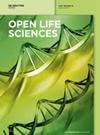PEI/MMNs@LNA-542 nanoparticles alleviate ICU-acquired weakness through targeted autophagy inhibition and mitochondrial protection
IF 1.7
4区 生物学
Q3 BIOLOGY
引用次数: 0
Abstract
Intensive care unit-acquired weakness (ICU-AW) is prevalent in critical care, with limited treatment options. Certain microRNAs, like miR-542, are highly expressed in ICU-AW patients. This study investigates the regulatory role and mechanisms of miR-542 in ICU-AW and explores the clinical potential of miR-542 inhibitors. ICU-AW models were established in C57BL/6 mice through cecal ligation and puncture (CLP) and in mouse C2C12 myoblasts through TNF-α treatment.PEI/MMNs@LNA-542纳米粒子通过靶向抑制自噬和保护线粒体缓解重症监护室获得性乏力
重症监护室获得性乏力(ICU-AW)在重症监护中很普遍,但治疗方法却很有限。某些微RNA,如miR-542,在ICU-AW患者中高度表达。本研究调查了 miR-542 在 ICU-AW 中的调控作用和机制,并探索了 miR-542 抑制剂的临床潜力。通过盲肠结扎和穿刺(CLP)在 C57BL/6 小鼠中建立了 ICU-AW 模型,通过 TNF-α 处理在小鼠 C2C12 肌母细胞中建立了 ICU-AW 模型。体内实验表明,ICU-AW 小鼠模型的肌力下降、肌纤维萎缩、细胞间隙增宽,miR-542-3p/5p 表达增加。体外实验表明,模型组的 ATG5、ATG7 和 LC3II/I 受抑制,MDA 和 ROS 水平升高,SOD 水平降低,MMP 减少。与动物实验相似,miR-542-3p/5p 的表达上调。凝胶电泳探讨了聚乙烯亚胺/介孔二氧化硅纳米颗粒(PEI/MMNs)与锁定核酸(LNA)miR-542抑制剂(LNA-542)的结合。PEI/MMNs@LNA-542 带有正电荷(3.03 ± 0.363 mV),尺寸较窄(206.94 ± 6.19 nm)。免疫荧光显示其内化效果显著,无明显细胞毒性。通过腹腔注射进行的生物活性研究表明,PEI/MMNs@LNA-542 可缓解小鼠肌肉力量下降、恢复纤维损伤和线粒体损伤。总之,PEI/MMNs 纳米颗粒能有效递送 LNA-542,靶向 ATG5 抑制自噬,减轻线粒体损伤,从而改善 ICU-AW。
本文章由计算机程序翻译,如有差异,请以英文原文为准。
求助全文
约1分钟内获得全文
求助全文
来源期刊

Open Life Sciences
BIOLOGY-
CiteScore
2.50
自引率
4.50%
发文量
131
审稿时长
43 weeks
期刊介绍:
Open Life Sciences (previously Central European Journal of Biology) is a fast growing peer-reviewed journal, devoted to scholarly research in all areas of life sciences, such as molecular biology, plant science, biotechnology, cell biology, biochemistry, biophysics, microbiology and virology, ecology, differentiation and development, genetics and many others. Open Life Sciences assures top quality of published data through critical peer review and editorial involvement throughout the whole publication process. Thanks to the Open Access model of publishing, it also offers unrestricted access to published articles for all users.
 求助内容:
求助内容: 应助结果提醒方式:
应助结果提醒方式:


